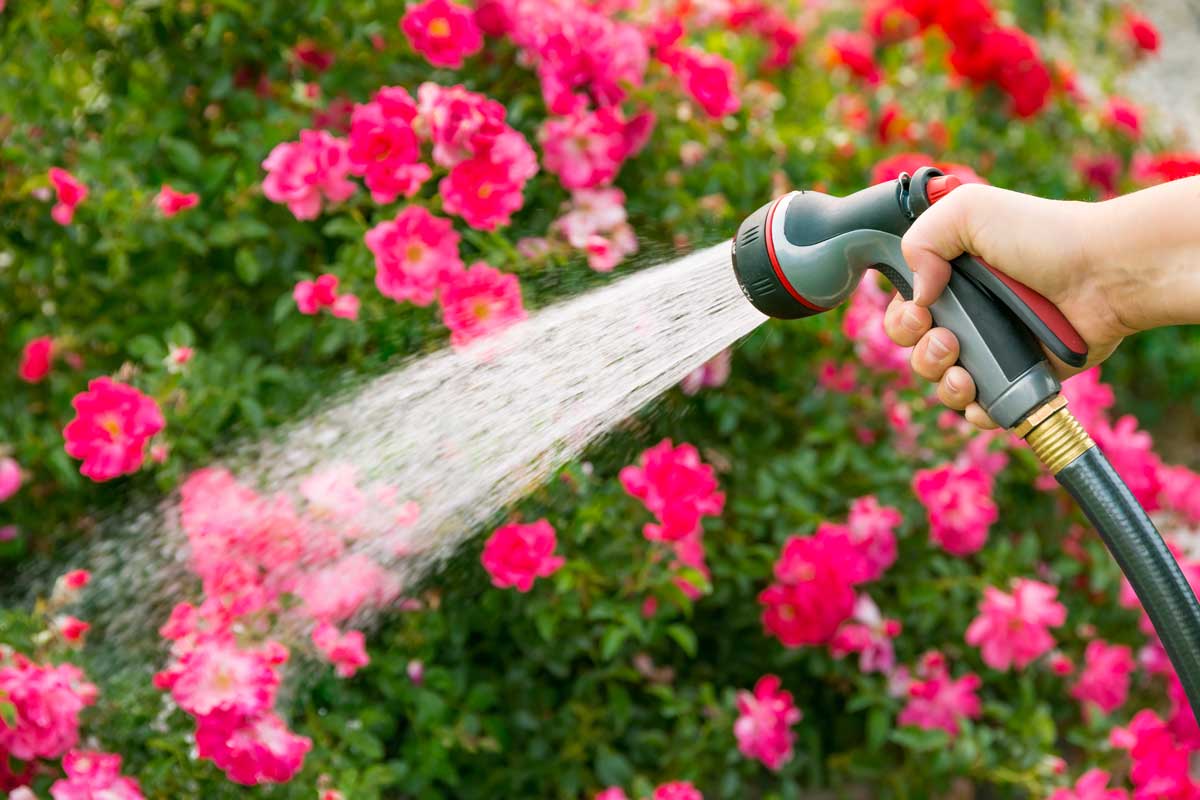Are We Watering Potted Plants More than Necessary?
Learn what new research says about how much you should be watering your potted and hanging plants.

It’s easy to harm your plants by giving them too much water, or not watering them enough. MariuszBlach / iStock / Getty Images Plus
Watering the plants sounds like a simple enough duty. Just get out the hose, start spraying, and what can go wrong? Actually, a lot can go wrong with this important, trickier-than-you-think facet of plant care. It’s why lack of water is a leading reason that new plants fail, and why too much water is the No. 1 killer of houseplants. And getting it just right is a balancing act that isn’t always easy or apparent.
Here are eight common watering myths & how to avoid harming your garden:
Summer storms are particular fakeouts because heavy downpours often run off more than they soak in, leaving the root zone of the soil surprisingly dry. Your goal is to keep the roots damp. A soil-moisture meter, a stick, or even your index finger are ways to gauge that.
Not only do different plants have differing water needs, different parts of your yard likely have different water-holding capacities. Low-lying clay areas, for example, may be damp for weeks after a rain, while a raised area in sandier soil is bone-dry two days later.
You can’t go by generic advice on how long to water. Timing will vary based on assorted factors, including the size of the plants, your soil type, the size of your hose or irrigation lines, and even your water pressure.
What counts is the overall goal of making the soil damp – but never to the point of sogginess – all around and to just under the plants’ roots. That might take you five minutes in a flower bed but 20 minutes around a young tree.
If you’ve planted a tree in a small hole with lots of added, well-drained soil, water can back up when it hits the surrounding clay. That can create a "bathtub effect" if you overdo it. That scenario makes it possible to rot roots in soggy soil while the surrounding soil is dry.
Two to four inches of organic mulch (bark, wood chips, pine straw, etc.) keeps moisture in the soil far better than bare soil. On the other hand, if you stack mulch deeply, it can take an inch or more of soaking rain just to get down to the soil surface.
Plants lose moisture much faster when it’s hot and dry than when it’s cooler and cloudy. Adjust your watering frequency accordingly, and don’t water solely by the calendar.
Plants under trees often go drier quicker, not only because the tree canopy blocked rain in the first place but also because big tree roots out-compete flower and shrub roots for moisture. You might have to water those plantings even more than ones in a sunny, open area.
Just because the grass is still green doesn’t mean your tree and shrub roots don’t need water. Frequent, shallow rains might be enough to keep shallow-rooted grass green, but it’s possible the soil is dry deeper.
Some people use wilted leaves as their cue for when to water, but that’s too late. Wilting means plants already are suffering drought stress. When plants wilt, the best time to water was yesterday.